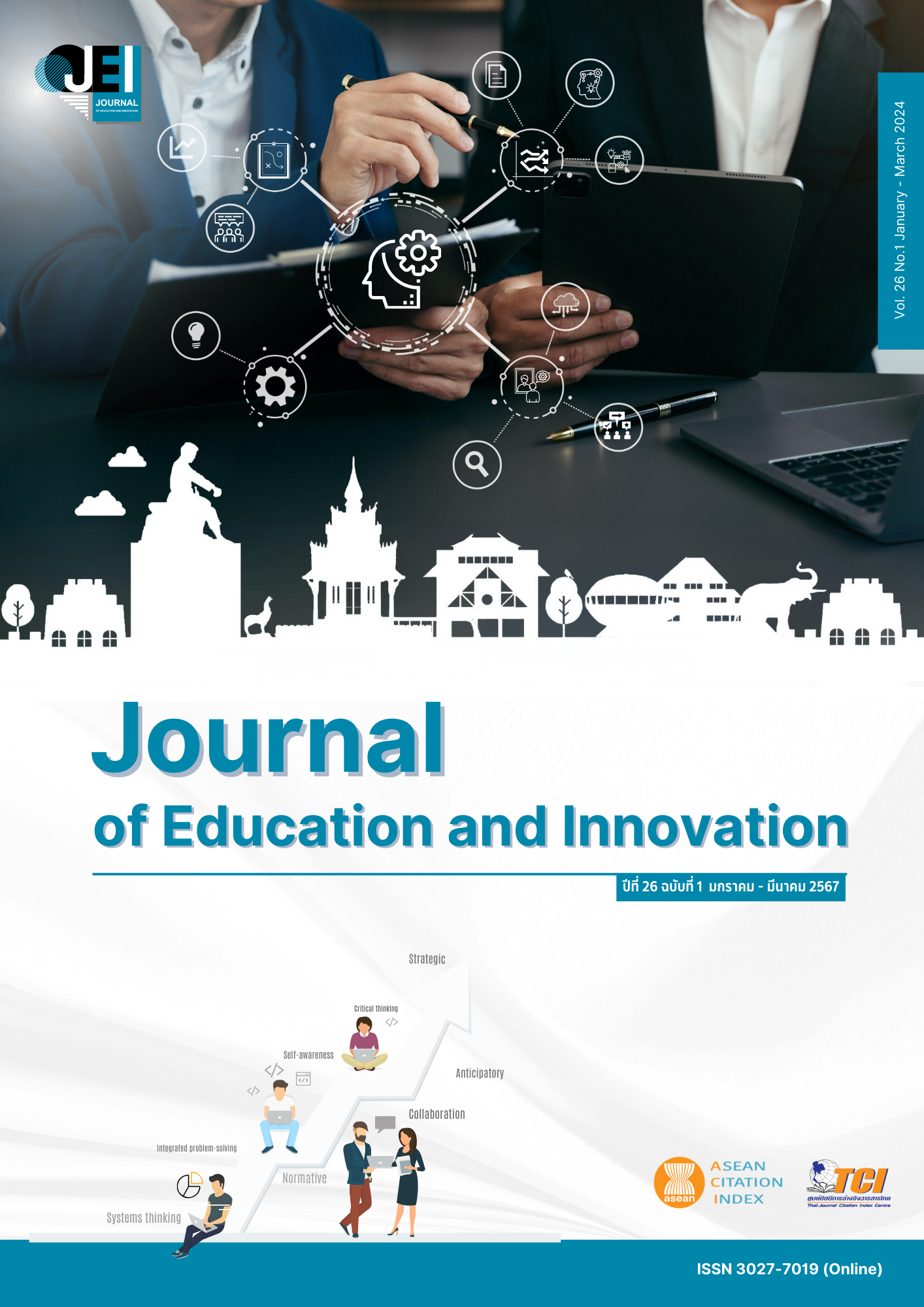A STUDY OF STUDENTS’ MATHEMATICAL PROBLEM-SOLVING SKILL AND SATISFACTION THROUGH MATHEMATICS CAMP ACTIVITY USING SSCS MODEL AND BAR MODEL ON RATIO, PROPORTION, AND PERCENTAGE
Main Article Content
Abstract
The aims of this research were to study of students’ mathematical problem-solving skill and satisfaction through Mathematics camp activity using SSCS model and bar model on ratio, proportion, and percentage. The target group was 27 Matthayomsuksa-2 students in the 1st Semester of Academic Year 2021 at Lomsakwittayakhom School, Lomsak district, Phetchabun province obtained by purposive sampling. The experiment spent 17 hours using Mathematics camp schedule and four learning activity plans, the test of mathematical problem-solving skill, the satisfaction survey towards Mathematics camp activity, and the observation form as the research instruments. The data was collected by one-group pretest-posttest design research, then completely analyzed by mean, standard deviation, dependent t-test and for growth score by relative gain score, and record students’ behavior by observation during activities. The studies found that 1) the students’ mathematical problem-solving skill after learning is higher than before at .05 level of statistical significance, 2) the average relative gain score of students’ mathematical problem-solving skills after learning through Mathematics camp activity using SSCS model and Bar model is at “High” level, and 3) the average score of students’ satisfaction after learning through Mathematics camp activity using SSCS model and Bar model is at “Very satisfied” level.
Article Details

This work is licensed under a Creative Commons Attribution-NonCommercial-NoDerivatives 4.0 International License.
The owner of the article does not copy or violate any of its copyright. If any copyright infringement occurs or prosecution, in any case, the Editorial Board is not involved in all the rights to the owner of the article to be performed.
References
Abell, S. K., & Pizzini, E. L. (1992). The effect of a problem in service program on the classroom behaviors and attitudes of middle school teacher. Journal of Research in Science Teaching, 29(7), 649-667.
Hafiz, M. K., & Fatra, M. (2017). Concept mapping learning strategy to enhance students’ mathematical connection ability. AIP Conference Proceedings, 1-6. https://doi.org/10.1063/1.4983944
Institute for the Promotion of Teaching Science and Technology. (2003). Mathematics measurement and evaluation. Bangkok: SE-Education.
Kaday, A. (2016). The effects of open approach with sscs model that affecting the achievement of science, the ability to solving problem and instructional satisfaction of the student grade 10 (Master thesis). Songkla: Prince of Songkla University.
Kaewnasangm, W. (2019). The study of mathematical problem solving ability after learning through SSCS model together with team-pair-solo technique at Kannasootsuksalai School, Suphanburi Province. Journal of Education and Human Development Sciences, 3(2), 9-29.
Kanjanawasee, S. (2009). Classical test theory (6th ed.). Bangkok: Chulalongkorn University.
Khairiree, K. (2011). Exercise for solving math problems using the Bar model for grade 4. Bangkok: A Team Business.
Kho, T. H., Yeo, S. M., & Lim, J. (2009). The Singapore model method for learning mathematics. Singapore: Ministry of Education.
Lapawae, N. (2016). Organizing learning activity for problem solving development by Polya’s problem solving processes Co-operate with bar model for second grade students. Kasalongkham Research Journal, 10(2), 61-62.
Mansanguan, S. (2017). Mathematics projects and activities. Bangkok: Ramkhamhaeng University Press.
Ministry of Education. (2008). Basic Education Core Curriculum B.E. 2551 (A.D. 2008). Bangkok: Institute for the Promotion of Teaching Science and Technology.
Naksanga, F. (2018). Developing mathematical learning achievement and skill in solving fraction equation of grade 6 students through the integration of the inquiry learning cycle (7E) with bar model (Master thesis). Songkhla: Songkhla Rajabhat University.
Pizzini, E. L., Shepardson, D. P., & Abell, S. K. (1989). A rationale for and the development of a problem solving model of instruction in science education. Science Education, 73(5), 523-534.
Polya, G. (1957). How to solve it. New Jersey: Princeton University.
Samaiyoo, S. (2011). The effects of organizing SSCS model on mathematical problem solving and communication abilities of mathayomsuksa two students on the application of linear equation in one variable (Master thesis). Bangkok: Srinakharinwirot University.
Srisa-ard, B. (2011). Preliminary research (8th ed.). Bangkok: Suweeriyasarn.


